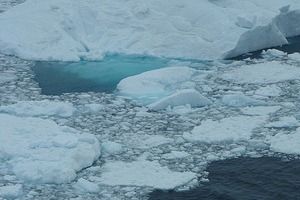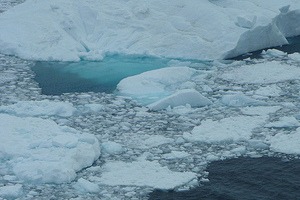New Antarctic ice research further fuels debate
In East Antarctica a new study looks at the freezing patterns of the ice, while in the West Antarctic new research claims the ice is more stable than originally thought. Both look set to add more fuel to the long-standing debate over the effects of the warming climate on the world’s oceans.

 How Antarctic ice sheets will react to the warming climate is a major concern for climate scientists. Two new studies looking at the characteristics of the ice sheets look set to further fuel the ongoing debate surrounding the Antarctic’s future.
How Antarctic ice sheets will react to the warming climate is a major concern for climate scientists. Two new studies looking at the characteristics of the ice sheets look set to further fuel the ongoing debate surrounding the Antarctic’s future.
Some of the Antarctic’s ice sheet is formed by water re-freezing below, not just from snowfall as traditionally thought, according to a new six-nation study, including the British Antarctic Survey.
The study, that looked at the jagged Gamburtsev Subglacial mountain range that is buried under ice in East Antarctica, found that large volumes of water were re-freezing to the underside of the ice sheet.
In some places it accounted for up to half of the ice sheet’s thickness, and growth caused by refreezing could even be comparable with that occurring at the surface.
The refrozen structures form because the ice sheet acts like a blanket, trapping heat from the Earth beneath, and with great pressure from the overlying ice, it melts the ice at the base. This water can then be pushed uphill, towards ridges where the ice sheet is thinner and the water refreezes. This challenges a traditional view that ice sheets are almost solely formed by snow that lands on the top.
Dr Robin Bell, lead author at Columbia University’s Lamont-Doherty Earth Observatory, said: “We usually think of ice sheets like cakes - one layer at a time added from the top. This is like someone injected a layer of frosting at the bottom, a really thick layer…As ice sheets change, we want to predict how they will change. Our results show that models must include water beneath.”
Meanwhile in West Antarctica, a new study by David Sugden at the University of Edinburgh, and colleagues suggests ice sheets may be more stable than previously thought.
The study looked at the Heritage Mountain Range and evidence suggests that vast expanses of the ice have been around for the past 200,000 years, surviving the last interglacial.
The base of the West Antarctic ice sheet is below sea level and should be unstable. If it were to collapse there could be a global rise in sea level by five metres, making its stability a major concern for climate scientists.
Adding further to the debate in a recent article in Nature, Robert Kopp at Princeton University found that ice sheets and therefore sea levels can still be vulnerable to even low levels of sustained global warming. His study found in the last interglacial sea levels were at least 6.6 metres higher and as much as 9 metres higher than current sea levels, which would have been unlikely under Sugden’s theory.
Image: Rayanbee | flickr




